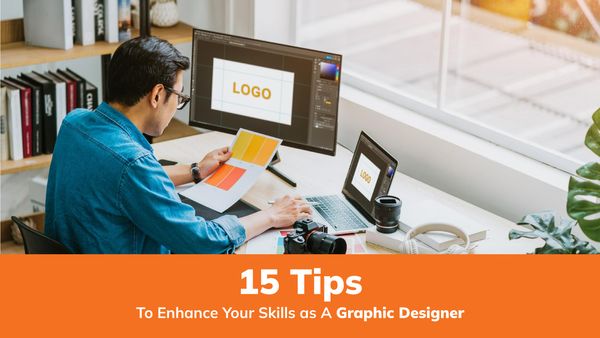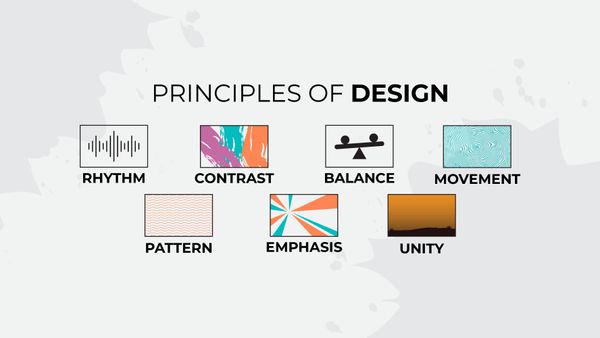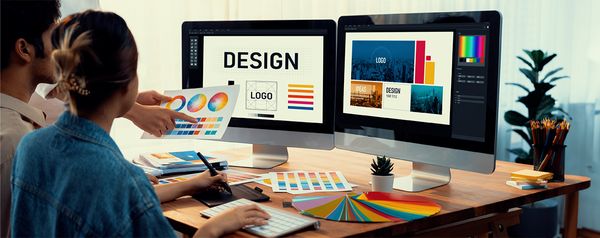Design Process: Tips from an Expert Graphic Designer
Graphic design is a powerful tool that combines creativity and strategic thinking to communicate messages and captivate audiences visually. Behind every successful design lies a well-defined design process that guides the designer from concept to completion.
In this blog, we will delve into the design process and share valuable tips from an expert graphic designer to help you elevate your design work. You can even learn graphic design for grasping the idea of how to implement the tips in better ways.
Understand the Project Goals and Audience
The first step in any design process is thoroughly understanding the project goals and target audience. Take the time to gather information, conduct research, and clearly understand what the design needs to achieve. Discuss the project with clients or stakeholders to gain insights into their expectations, objectives, and the message they want to convey. Understanding the target audience will help you tailor your design to resonate with them effectively.
Conceptualize and Brainstorm
Once you have a clear understanding of the project, it's time to unleash your creativity and brainstorm ideas. Allow yourself to explore different concepts, sketch rough drafts, and experiment with various visual elements. Consider different color schemes, typography styles, and layouts that align with the project's goals and target audience. Brainstorming sessions can be collaborative or individual, depending on your preference and the project requirements.
Create Wireframes or Mockups
After the brainstorming phase, it's crucial to create wireframes or mockups to structure your ideas. These skeletal frameworks will help you visualize the layout and composition of the design before adding the final details. Wireframes can be simple sketches or digital representations that outline the placement of elements such as text, images, and graphic elements. Conversely, mockups provide a more detailed representation of the design, including colors, typography, and imagery.
Refine and Iterate
Learn graphic design from experts to understand and implement the design is an iterative process. It is the refinement that plays a significant role in achieving the best results. Review your initial concepts and seek feedback from clients or colleagues. Analyze the strengths and weaknesses of each design option and make necessary improvements. Pay attention to alignment, spacing, hierarchy, and visual balance details. Strive for clarity and simplicity in your design, ensuring it effectively communicates the intended message.
Select the Right Tools
As a graphic designer, having the right tools is essential for executing your ideas effectively. Invest in industry-standard design software such as Adobe Photoshop, Illustrator, or InDesign, depending on your specific needs. Familiarize yourself with these tools and keep up with the latest features and updates. Additionally, consider using online collaboration tools that allow seamless communication and sharing of design files with clients and team members.
Seek Feedback and Collaboration
Design is subjective, and seeking feedback is crucial to refine and enhance your work. Share your designs with clients, colleagues, or other design professionals to gain fresh perspectives. Listen attentively to their feedback and consider their suggestions objectively. Collaboration with others can spark new ideas and help you push the boundaries of your creativity.
Attention to Detail and Typography
Details matter in graphic design, and paying attention to every element of your design is essential for achieving a polished and professional result. Ensure that your typography choices are appropriate and enhance readability. Experiment with font sizes, line spacing, and letter spacing to create a harmonious and visually appealing typographic hierarchy. Pay attention to the alignment of text and other visual elements to create a sense of balance and cohesiveness.
Use Color Theory Wisely
Color is vital in design, as it evokes emotions and creates visual impact. Familiarize yourself with color theory principles to effectively use color in your designs. Understand the meaning and symbolism of different colors and use them intentionally to convey the desired message. Experiment with color palettes and combinations to create visual interest and harmony in your designs.
Stay Updated with Design Trends
The design industry is constantly evolving, and staying updated with the latest design trends and techniques is essential. Explore design blogs, attend webinars, and participate in design communities to learn from fellow designers and industry experts. However, while it's good to be aware of trends, remember to balance them with timeless design principles and tailor your work to the specific needs of each project.
Maintain an Organized Workflow
Maintaining an organized workflow is crucial for efficiency and productivity. Create a system for organizing your design files, including naming conventions and folder structures. Keep your design elements, such as icons, images, and fonts, well-organized and easily accessible. This organization will save you time and frustration when revisiting or sharing your work.
However, the design process is a creative journey requiring skill, knowledge, and passion. Following these tips from an expert graphic designer can enhance your design process and create visually stunning and practical designs. Remember to embrace the iterative nature of design, seek feedback, and stay curious to grow and improve as a designer continually.
Are you interested in the world of graphic design? Do you want to unleash your creativity and create visually captivating designs? If so, joining a graphic design course can be a game-changer. Here's why:
- Learn Photoshop:
Photoshop is a powerful and widely used software in the graphic design industry. By enrolling in a graphic design course, you'll have the opportunity to learn Photoshop from scratch or enhance your existing skills. Learn Photoshop online, that will allow you to manipulate images, create digital illustrations, and design stunning visuals. Mastering Photoshop opens a world of possibilities for your design projects.
- Specialized Courses:
Many graphic design courses offer specialized modules or separate courses focused solely on learning Photoshop. These courses provide in-depth training, teaching you the ins and outs of the software and helping you develop advanced skills. By dedicating time to a Photoshop course, you can become proficient in using this essential tool for graphic designers.
- Access to Industry Experts:
Graphic design courses are typically taught by experienced professionals with expertise in the field. They can share valuable insights, tips, and tricks you might not find elsewhere. Learning from industry experts gives you a comprehensive understanding of graphic design principles and best practices.
- Networking Opportunities:
Joining a graphic design course introduces you to a community of like-minded individuals who share your passion for design. Networking with fellow students and instructors can lead to valuable connections in the industry. Collaborating with peers and receiving feedback on your work can help you grow as a designer and open doors to potential freelance projects or job opportunities.
- Updated Curriculum:
Graphic design courses often have a regularly updated curriculum to keep up with the latest industry trends and technology. This ensures that you learn relevant skills and techniques that are in demand in the job market. Staying up-to-date with the latest advancements in graphic design will give you a competitive edge in your career.
- Convenient Location:
When searching for graphic design courses, you can find options nearby. Searching for "graphic design courses near me" will help you discover institutes or training centres in your area. Having a course nearby saves you commuting time and allows easier access to the resources and facilities provided by the institution.
In conclusion, joining a graphic design course online offers numerous benefits, including learning Photoshop, access to specialized courses, networking opportunities, exposure to industry experts, and an updated curriculum. So, if you're passionate about graphic design and want to enhance your skills, enrolling in a graphic design course is a wise investment in your creative journey.




